Yakushima: Journey to Japan's Ancient Soul – Trekking Jomon Sugi & Miyanoura-dake
6/20/2025
9views
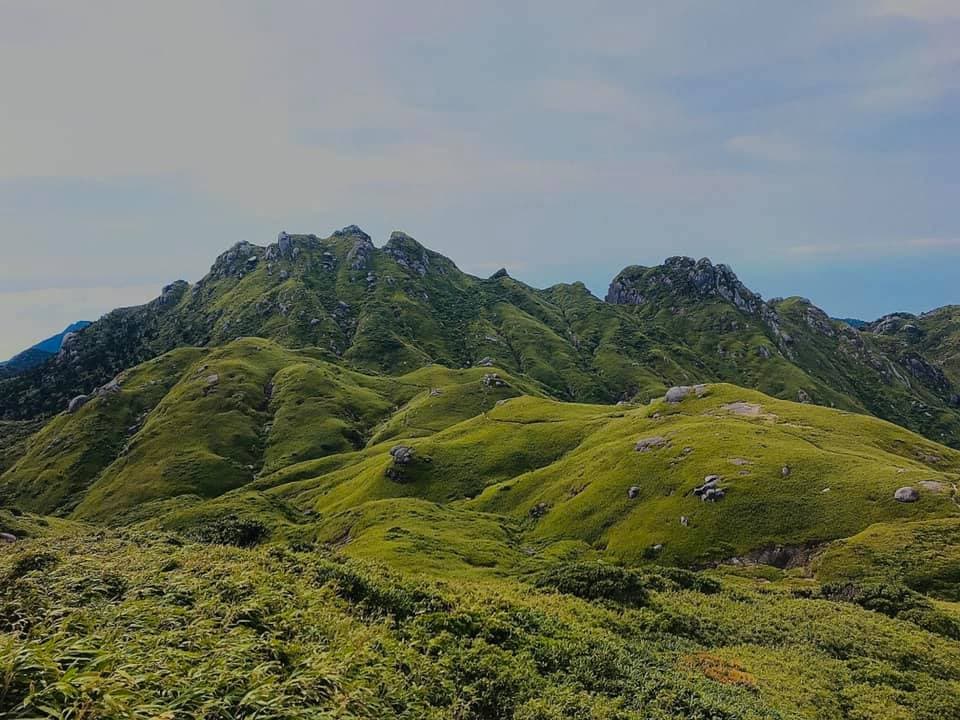
Japan is home to World Heritage sites where untouched nature thrives, truly evoking the mystery of our planet. Among them, Yakushima, a mystical island floating off the coast of Kagoshima Prefecture, cannot help but inspire awe with its fantastical ancient forests and the venerable, millennia-old giant cedar, "Jomon Sugi," that quietly stands within them.
I recently embarked on a 1-night, 2-day traverse of Yakushima, exploring both the iconic Jomon Sugi and Kyushu's highest peak, Miyanoura-dake (1936m). From the summit, Yakushima was encircled by a vibrant blue ocean, creating a breathtaking contrast between the lush green mountains and the deep blue sea. The journey was filled with countless highlights, from the historic trolley path to the majestic Jomon Sugi. Along the trails and near the summit, pristine water sources were abundant, ensuring we never lacked for water. Above all, the mystical world of moss-covered forests, reminiscent of a Hayao Miyazaki film, offered a truly soul-stirring adventure.
In this article, I will provide a comprehensive overview of the 1-night, 2-day trek on Yakushima, highlighting its unparalleled charm, and explaining why my guidance is indispensable for foreign visitors seeking to experience this hidden gem safely and profoundly
Contents
Yakushima's Special Charm: A Spiritual Adventure in a World Heritage Forest
Yakushima was inscribed as Japan's first World Natural Heritage site, along with Shirakami-Sanchi, on December 11, 1993. Its value is recognized under two criteria: "superlative natural phenomena or areas of exceptional natural beauty" and "outstanding examples representing significant ongoing ecological and biological processes in the evolution and development of terrestrial, freshwater, coastal and marine ecosystems and communities of plants and animals". Notably, Yakushima is the only natural heritage site in Japan recognized for its natural beauty.
Yakushima's natural landscape is characterized by its overwhelming beauty, woven from primeval natural forests, including Yakusugi cedars that are thousands of years old, and landscapes richly covered in moss. Furthermore, Yakushima is known for its exceptionally humid climate, often described as "35 days of rain in a month".This abundant rainfall is believed to be the reason why Yakusugi cedars, which typically live for about 300 years, can survive for over 1,000 years.This extreme humidity and significant altitude differences create a globally rare ecosystem where primeval natural forests of the warm temperate zone are continuously distributed from the coastline to the mountain peaks.This moss-covered forest evokes a mysterious and fantastical world, much like those depicted in Hayao Miyazaki's films.Jomon Sugi, the symbol of Yakushima, stands majestically on the southern slope near the Takatsuka-yama ridge at an altitude of approximately 1,300 meters, making it the largest giant cedar confirmed to date on Yakushima.Its estimated age ranges widely from 2,170 to 7,200 years.The name "Jomon Sugi" is said to derive from two theories: one suggests it has been alive since the Jomon period, and the other proposes that its wildly undulating trunk resembles Jomon pottery.Standing before this unique giant tree, which has lived for such an immense span of time, one is enveloped by its overwhelming presence, the power of life, and the flow of eternal time, experiencing profound emotion.
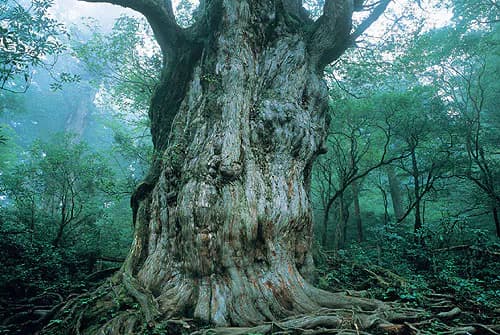
The breathtaking views from Miyanoura-dake (1936m), Kyushu's highest peak, allow you to experience the true essence of Yakushima, often referred to as the "Alps of the Ocean".The path to the summit unfolds through diverse natural landscapes unique to Yakushima, including moss-covered forests, wetlands, and granite rock formations.Particularly from mid-May to early June, the Yakushima rhododendron, an endemic species, dyes the mountain slopes in beautiful pinkish-white hues, adding vibrant color to the scenery.From the summit, with nothing to obstruct the view, a 360-degree panorama of primeval forests, the連なり of the inner mountains, and the vast ocean unfolds.On clear days, a sea of clouds spreads at eye level, offering an exceptional view that makes the mountain appear to float in the sky.
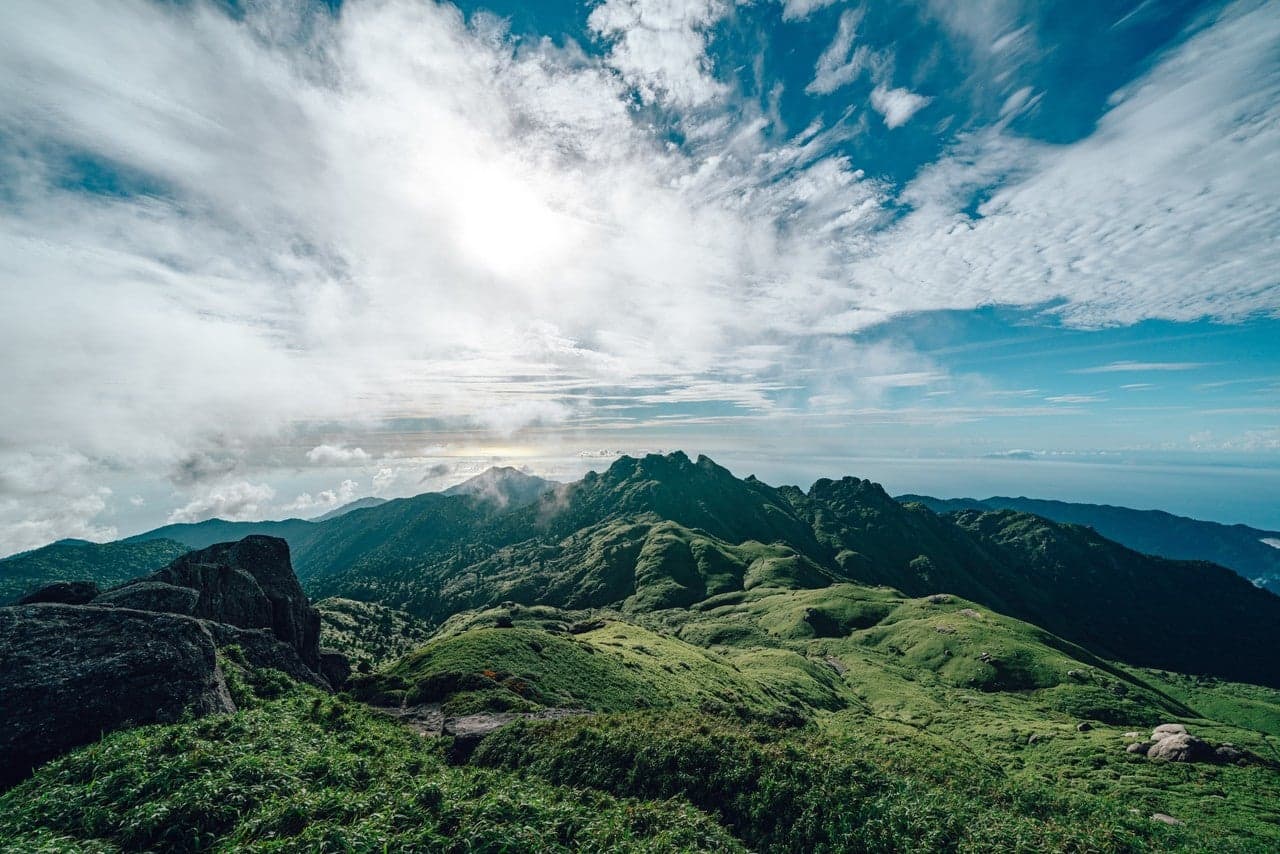
Jomon Sugi & Miyanoura-dake 1-Night, 2-Day Trek: Itinerary and Highlights
The 1-night, 2-day traverse of Jomon Sugi and Miyanoura-dake on Yakushima is a popular route that allows for a deep experience of Yakushima's diverse natural environment. A typical course involves starting from Yodogawa Trailhead, heading to Miyanoura-dake, then proceeding to Jomon Sugi, and finally descending to Arakawa Trailhead or Shiratani Unsuikyo. Route Overview and Highlights at Each Major Point:
Day 1: From Yodogawa Trailhead to Miyanoura-dake, then to the Mountain Hut
Departure from Yodogawa Trailhead: You'll start early in the morning, still in the dark, from Yodogawa Trailhead at an altitude of 1360m. You'll begin walking through the "Yakushima Forest Zone," where broadleaf trees and Yakusugi cedars coexist, stepping into a forest of giant trees.
Yodogawa Hut: An unmanned hut reached in about 50 minutes from the start of the trek, equipped with a water source and toilets. It's a good spot to have breakfast while enjoying the clear stream.
Takatsuka-dake Observatory (Tofu Rock): Reached in about 2 hours from the start, this observatory offers views of the giant rock known as "Tofu Rock." From here, you can closely view the peak of Takatsuka-dake through the branches of a bleached Yakusugi cedar, making it a superb viewpoint.
Kohana-no-Ego / Hana-no-Ego: You'll proceed to Kohana-no-Ego, one of Japan's southernmost high-altitude wetlands, and then to the larger Hana-no-Ego. Wooden boardwalks are maintained to protect the wetlands, allowing you to enjoy a natural garden-like atmosphere with sphagnum moss and Yakushima-hoshikusa wetland plants.
Nageishidaira: Located in the saddle between Mt. Kuromi and Mt. Nageishi, this area is dotted with huge flat rocks. Here, Miyanoura-dake first appears, and the view opens up, making it a recommended spot for a short break.
Miyanoura-dake Summit: Finally, you'll reach the summit of Kyushu's highest peak. With nothing to obstruct the view, a 360-degree panorama of primeval forests, the連なり of the inner mountains, and the vast ocean unfolds. On clear days, a sea of clouds spreads at eye level, offering an exceptional view that makes the mountain appear to float in the sky.
Overnight Stay at a Mountain Hut (Shintakatsuka Hut): From Miyanoura-dake, you'll head to Shintakatsuka Hut. This is the most frequently used unmanned hut for traverse treks, as it's located between Miyanoura-dake and Jomon Sugi.You can spend a night deep in the forest, gaze at the starry sky, and interact with other climbers. Since the mountain huts are unmanned and first-come, first-served, it's recommended to bring a lightweight tent during crowded periods.
Day 2: Encounter with Jomon Sugi, and Descent
Jomon Sugi: You'll depart from the hut while it's still dark to reach Jomon Sugi, aiming to see it bathed in the red light of the rising sun.The moment you stand before its immense size, vitality, and sublime atmosphere will truly be a soul-stirring experience. An observation deck has been installed to protect Jomon Sugi, and entry outside the deck is prohibited.
Wilson Stump: On the descent from Jomon Sugi, you'll encounter the massive Wilson Stump, said to have been felled for Toyotomi Hideyoshi's Great Buddha Hall. It's famous for appearing heart-shaped when viewed from inside.
Trolley Path: The path from Jomon Sugi to Arakawa Trailhead follows the old railway track, which was once used for logging. The initial section is easy to walk, building anticipation for entering the Yakushima forest.
Moss-covered Forest (Confluence with Shiratani Unsuikyo route): From the trolley path, you'll enter the Kusukawa Trail, leading towards the "Moss-covered Forest" of Shiratani Unsuikyo. The contrast between the deep green moss and the dappled sunlight creates a fantastical world of breathtaking beauty.
Descent: A mix of fatigue from the long walk and a sense of fulfillment from experiencing the magnificent nature will accompany you. You'll enjoy the changing vegetation as you descend towards the trailhead.
This 1-night, 2-day traverse offers a profound physical and mental challenge and a sense of accomplishment through long hours of walking, adapting to sudden weather changes, and engaging in self-reflection amidst the mountains.
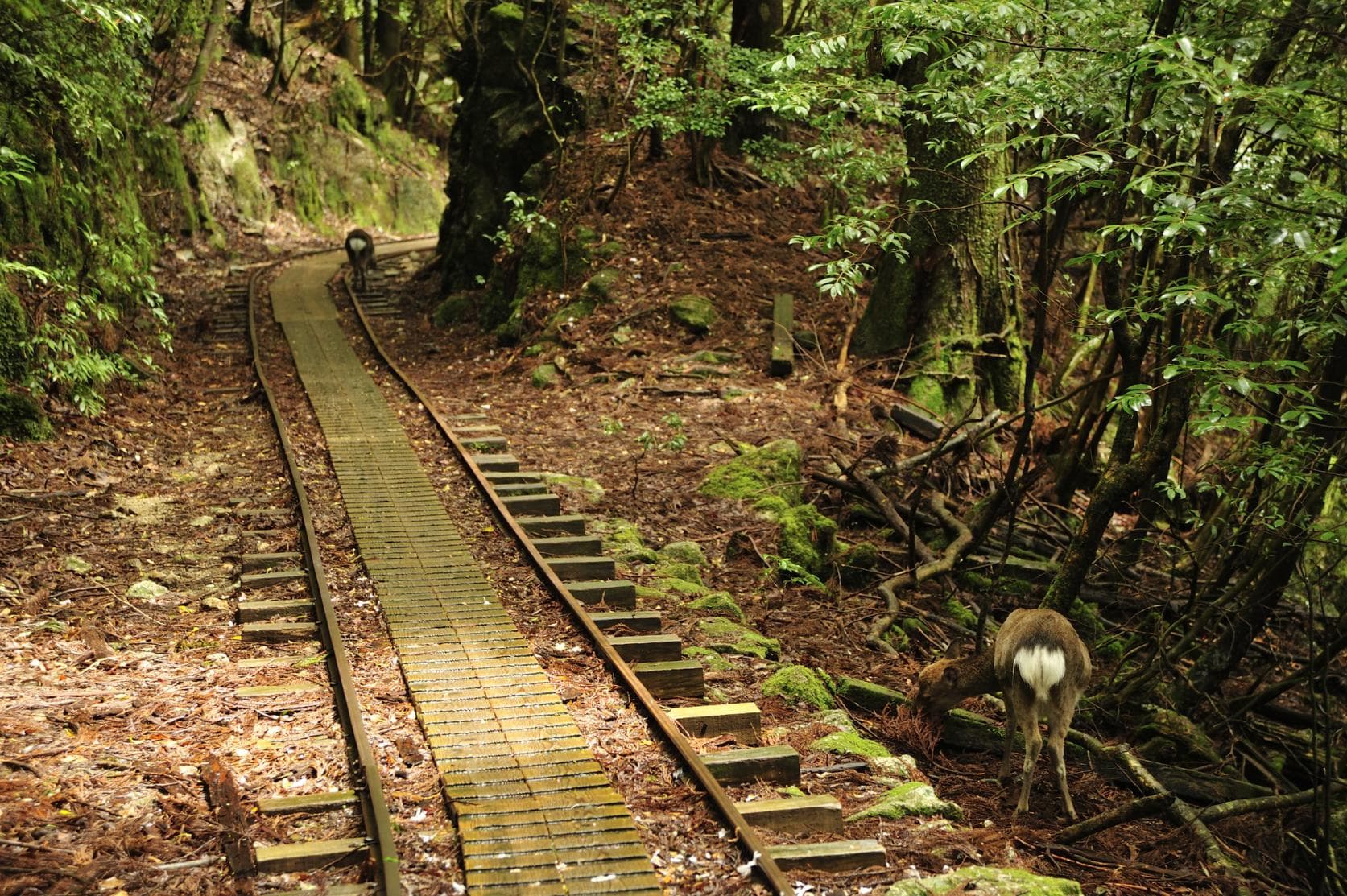
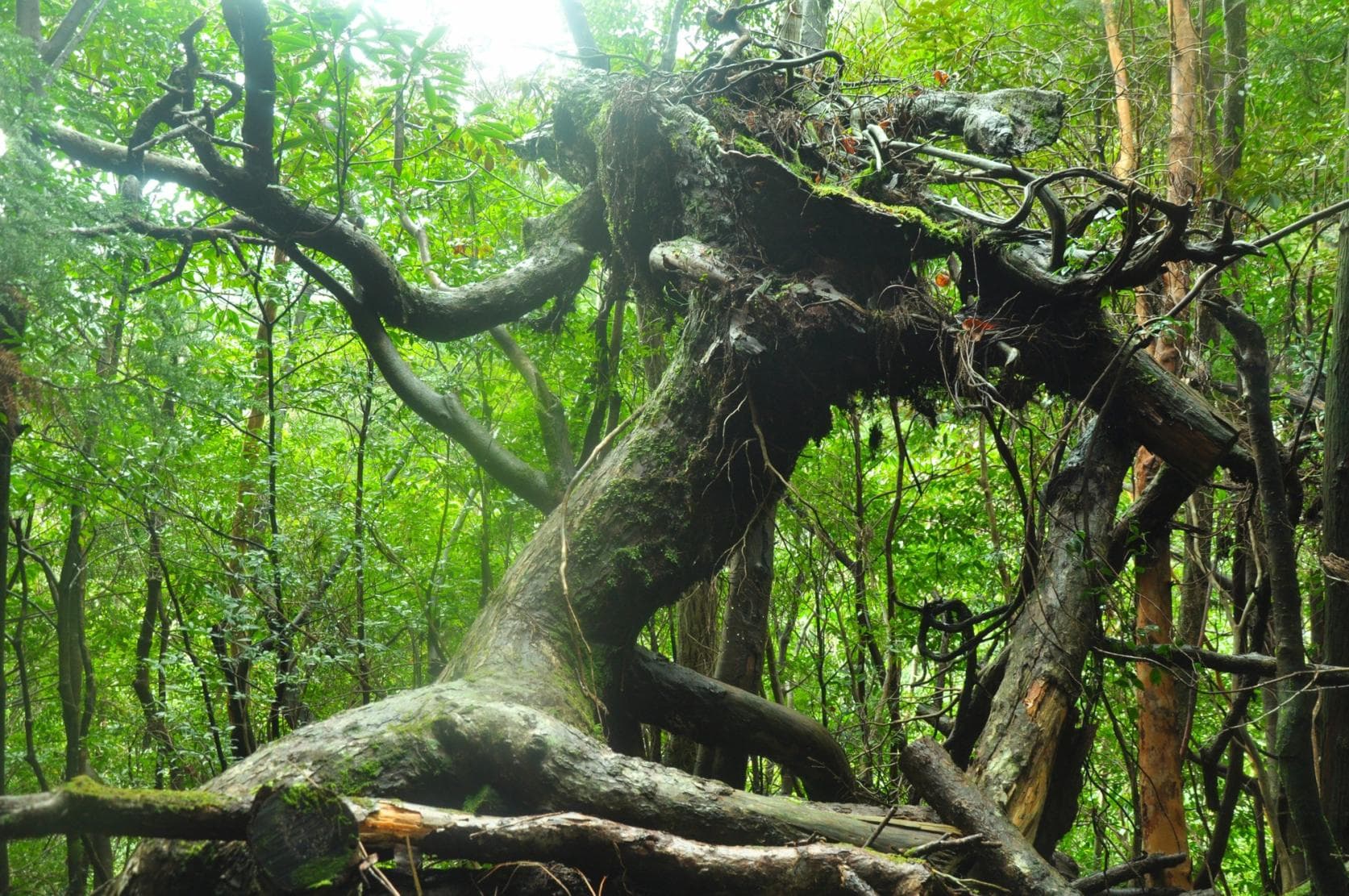
Why a "Guide" is Indispensable for Foreign Visitors: Safety and a Deeper Experience in a Hidden Gem
While Yakushima's traverse trekking offers unparalleled charm, it presents numerous challenges for foreign visitors. This is precisely why my guiding service is indispensable for ensuring you experience Yakushima's adventure safely and to its fullest depth.
Complex Access and Reservations
Access to Yakushima is diverse, with options including flights, high-speed boats, and ferries from Kagoshima.However, transportation to the main trailheads on the island is complex. For instance, to reach Arakawa Trailhead for Jomon Sugi, private car access is restricted from March to November, requiring a shuttle bus transfer from Yakusugi Nature Museum.Understanding bus schedules, fares, and the cooperation fee system can be overwhelming for foreign visitors who may struggle with Japanese information.Furthermore, Yodogawa Trailhead for Miyanoura-dake is not accessible by public transport alone, making rental cars or taxis the primary options.Mountain huts are unmanned and operate on a first-come, first-served basis, requiring careful planning for potential overcrowding.
Trekking Difficulty and Safety Management
Yakushima's trails are characterized by the ruggedness typical of Japanese mountains. Moss-covered rocks can be slippery, and sudden weather changes (especially Yakushima's characteristic heavy rainfall) always pose risks.The fact that approximately 20 accidents and injuries occur annually over the past decade underscores the importance of proper equipment and preparation.While there are no brown bears on Yakushima , endemic subspecies of Yakushima macaques and Yakushima deer inhabit the island.It's crucial to know the appropriate etiquette when encountering them (e.g., do not feed them, maintain distance).In case of injury or getting lost, mobile phone signals are often unavailable in the mountains.Although GPS functionality can be used, there's a risk of battery depletion, making paper maps and compass navigation skills essential.Selecting appropriate gear (highly waterproof rainwear, hiking boots, warm clothing, etc.) is also vital for a safe trek.
Language Barrier and Information Gap
Communication at mountain huts, understanding trail markers, and obtaining real-time local information (weather, trail conditions, traffic restrictions) can be significant barriers for foreign visitors who are not fluent in Japanese.The current lack of detailed information in foreign languages increases the likelihood of encountering unexpected problems.
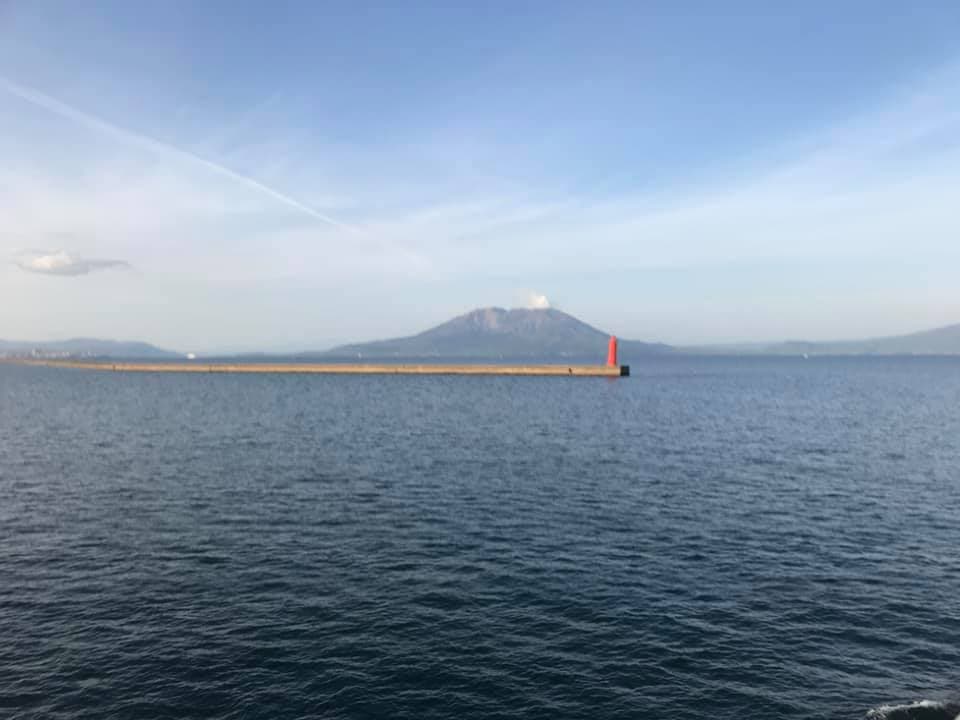
Providing a Deeper Experience (The Value of a Guide)
My guiding service addresses all these challenges, ensuring you have the best possible experience on Yakushima.
Nature Interpretation: I provide expert commentary on Yakusugi cedar varieties, vegetation, animals (Yakushima deer, macaques), and water cycles, transforming a mere hike into an adventure filled with "learning" and "discovery".
History and Culture: By explaining the island's Jomon culture, mountain worship ("Takemairi") , and the history of forestry, I help you connect with the spiritual depth of Yakushima.
Thorough Safety Management: With my knowledge and experience in assessing sudden weather changes, managing pace, and handling emergencies, I prioritize your safety above all else.
Comprehensive Logistics: I handle all logistics, including arranging transportation to trailheads (e.g., shuttle car arrangements) , supporting mountain hut usage, preparing meals (e.g., arranging bento boxes) , advising on and assisting with equipment, and providing detailed information in advance.
My Van Life Experience: Leveraging my experience living in a van and traveling across Japan, I transform this special trek into a deeper, more personalized experience.
Bilingual Support: With perfect communication in English and French, you can fully immerse yourself in Yakushima's charm without any language barriers.
Tips and Precautions for Your Visit
To safely and comfortably enjoy traverse trekking on Yakushima, thorough preparation and a deep understanding of local weather conditions and environmental characteristics are essential.
Best Season and Preparation for Weather Changes
The trekking season in Yakushima is generally considered best from spring to autumn.Specifically, late March to May and late October to November are recommended for mountain walking.During these periods, the weather tends to be relatively stable with less rain.However, Yakushima is known for its high annual rainfall, often described as "35 days of rain in a month".Mountain weather can change rapidly , and mountain forecasts often differ from lowland forecasts.Particularly in spring and during the rainy season (June), rainfall is heavy, which can lead to muddy trail conditions.Snowfall occurs on the summit ridges from mid to late November , and the mountainous areas are covered in snow from December to February, requiring winter mountaineering gear and specialized skills for winter treks.Residual snow can persist until March, so checking snow conditions is important even for spring treks.July to September is typhoon season , with Yakushima being particularly affected by typhoons from August to October.Landslides caused by typhoons can lead to trail and road closures.When planning your trek, it's crucial to not only check the weather forecast but also to have the courage to cancel your trip, even if no warnings are issued, based on your own experience and judgment.
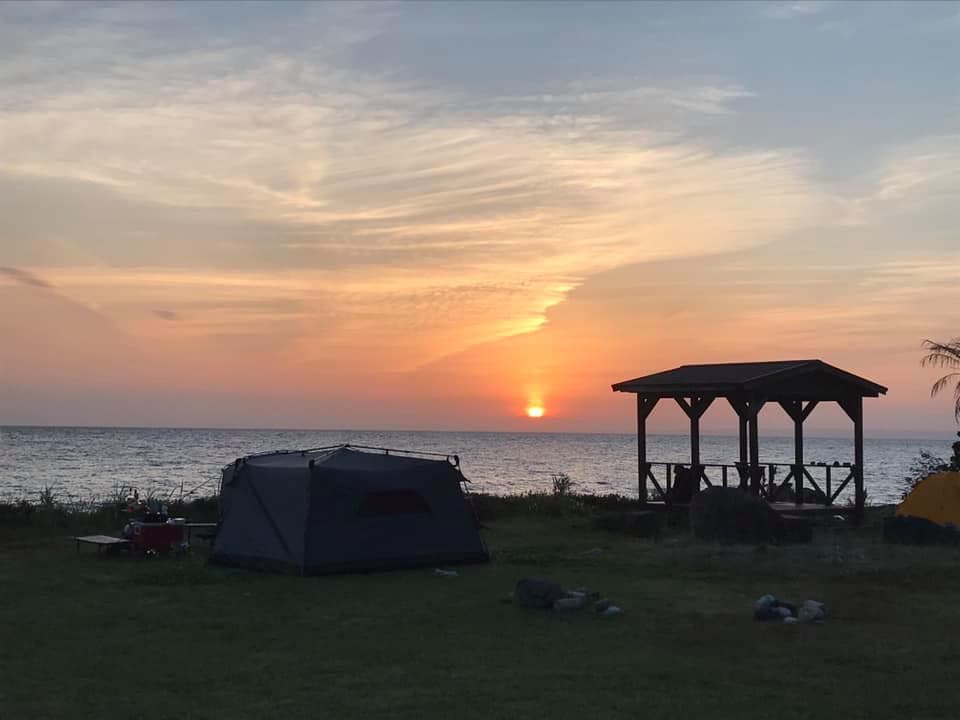
Essential Gear and Preparation
Even for a day trip in Yakushima's mountainous areas, "mountain climbing gear" is essential.Tourist attire is insufficient , and it is strongly recommended to carry emergency items such as warm clothing, food, a flashlight, a map, a compass, a whistle, and a mobile phone (or radio).
Clothing:
Layering: Long-sleeved, quick-drying shirts (recommended even in summer) and a change of clothes.
Long Pants: To protect skin from branches, rocks, and insects, choose stretchy, quick-drying materials, and avoid jeans or cotton, which become heavy and slow to dry when wet.
Rainwear: Mountain weather changes rapidly, so waterproof and breathable rainwear (top and bottom) is essential.
Warm Clothing: High-altitude mountains can be cold even in summer, so lightweight, packable down jackets or fleeces are necessary.
Hiking Boots: For unpaved and slippery trails, thick-soled, lightweight, high-cut boots that support the ankle are preferable.
Hat: Useful for sun protection, maintaining visibility in rain, and preventing injuries.
Items to Carry:
Backpack: Keeps both hands free, preventing falls and injuries. Include a rain cover.
Drinks and Food: Frequent hydration is crucial. Sports drinks are also recommended. There are no convenience stores on Yakushima, so purchase food at a supermarket the day before or arrange for a climbing bento.Pack easily accessible energy snacks like jelly drinks, nutrition bars, chocolate, and candy.
Portable Toilet: Some trails lack toilets, so carrying a portable toilet is recommended.Used portable toilets can be disposed of in collection boxes at trailheads or the Yakusugi Nature Museum parking lot.
Water Purifier: While water sources are available near mountain huts , carrying a portable water purifier is strongly recommended due to potential low water levels or hygiene concerns.
Headlamp: Essential for early morning starts or after sunset.
Trekking Poles: Aid in preventing falls, supporting safe walking, and reducing strain on legs. Always attach rubber caps to the tips to prevent trail damage and protect plants (except in snowy conditions).
Map, Compass, and GPS: Essential for preventing getting lost. Smartphone GPS is useful, but mobile signal is often poor in the mountains, so download maps in advance for offline use. Be mindful of battery consumption and use airplane mode.
Medication and First Aid Kit: Prepare bandages, gauze, disinfectant, etc., for unexpected illness or injury.
Zipper Bags: Protect valuables like smartphones, wallets, and cameras from rain and humidity.
Satellite Phone: Mobile phone signals may not be available in some mountainous areas of Yakushima. A satellite phone can enhance safety.
Mountain Hut Overnight Stay Preparation
All mountain huts on Yakushima are unmanned shelters, operating on a first-come, first-served basis without prior reservations.They do not provide meals or sleeping gear (sleeping bags, mats), so visitors must bring their own essentials.During peak seasons, huts may exceed their capacity, so bringing a lightweight tent is recommended.
Environmental Conservation
Protecting Yakushima's precious World Natural Heritage requires the awareness and actions of every climber.
Take all trash home: All personal trash and leftover food must be carried out, as they can attract wildlife and pollute water sources.
Do not touch plants or moss, stay on designated trails: Wetlands and mossy areas are sensitive to even slight pressure. To protect the landscape and prevent degradation, do not step off designated trails.When using trekking poles, always attach rubber caps to the tips.
Do not pollute water sources, use designated toilets: Washing dishes or relieving oneself outside designated areas contaminates mountain water. Wipe dirty dishes with paper and carry out food scraps. Always use mountain toilets or portable toilets for defecation.
Respect sacred places: Yakushima's mountains are objects of worship, with shrines enshrined on peaks and in rock shelters. Remember that you are "intruding" and avoid defiling these sacred places.
Do not make loud noises: Many climbers enjoy the sounds of nature, such as streams, rustling leaves, and bird songs. Be considerate when using mobile phones, radios, musical instruments, or speakers.
No bonfires, be careful with stoves: Bonfires are strictly prohibited as they can cause forest fires. When using stoves or other cooking equipment, be mindful of others. Using them inside huts is generally prohibited to prevent fires and carbon monoxide poisoning.
Mindset for Safe Climbing and Preventing Getting Lost
For safe climbing on Yakushima, a prepared mindset and specific measures to prevent getting lost are essential.
Mindset:
Plan your trek realistically according to your health and physical condition, and prepare sufficient gear.
Always inform family or friends of your destination and itinerary in advance.
Do not enter the mountains if weather warnings are issued before your trek. If warnings are issued during your trek, prioritize safety and have the courage to turn back.
Always be aware of falling branches and rocks.
Do not attempt to cross swollen rivers at crossing points.
If your descent is delayed, contact your accommodation.
Preventing Getting Lost:
If you get lost, do not wander aimlessly, and do not descend into ravines.
Staying on the designated trail is paramount.
Map and Compass: Always confirm your current location during the trek. Practice orienting a paper topographic map with a compass (aligning the map's north with true north) and comparing it with the surrounding terrain.Before starting, check that your compass's magnetic pole has not reversed.
GPS Functionality: Smartphone GPS and hiking map apps are very useful, but mobile phone signals are often poor in Yakushima's mountains.Download map data in advance for offline use. Be mindful of battery consumption and use airplane mode.
Whistle: Carry a whistle as emergency gear and know how to use it in an emergency.
Conclusion: Making Your Yakushima Traverse Trek an Unforgettable Experience
Traverse trekking on Yakushima, Kagoshima Prefecture, exploring Jomon Sugi and Miyanoura-dake, is a truly unique experience that allows you to deeply feel the core of this island, Japan's first World Natural Heritage site, with all your senses. The primeval natural forests woven by millennia-old Yakusugi cedars, the moss-covered forests, and the continuous vertical distribution of vegetation from the coastline to the mountain peaks eloquently explain why Yakushima holds global value in both "natural beauty" and "ecosystems".Its peculiar climate, often described as "35 days of rain in a month," nurtures giant trees and promotes the evolution of endemic species, while also presenting the harshness of nature that demands thorough preparation and a resilient mindset from trekkers.This magnificent journey into the heart of nature is more than just a physical challenge. The historical "rediscovery" of Jomon Sugi, which raised awareness for the island's nature conservation , and the mystery surrounding its estimated age instill deep emotion and reverence in visitors. The changing vegetation across Miyanoura-dake's altitude allows you to truly experience Yakushima as a "miniature of nature," an outstanding example of ecological evolution and development.However, its ruggedness is also part of Yakushima's charm, necessitating meticulous preparation and appropriate gear. Rain gear, warm clothing, a headlamp, and safety equipment like a map, compass, and GPS are "essentials" , as inadequate gear can directly lead to accidents.Due to unstable mobile phone signals in the mountains , map-reading skills and alternative communication methods like satellite phones are crucial.Yakushima's nature has been preserved through a culture of reverence and coexistence with nature, exemplified by the local residents' "Takemairi" mountain worship.Even today, adherence to trekking etiquette—such as paying the mountain area environmental conservation cooperation fee , submitting a climbing notification , maintaining an appropriate distance from wildlife , and taking all trash home —is the responsibility of every trekker to pass on this precious nature to future generations. These systems and manners form a framework for "sustainable trekking," demanding "responsibility and participation" from trekkers in response to increased environmental impact and accident risks due to growing visitor numbers.Furthermore, when visiting Yakushima, transportation and accommodation arrangements require careful planning due to seasonal restrictions and public transport limitations.For beginners or those unsure of their physical abilities, utilizing a certified guide is a wise choice to enhance safety and gain a deeper understanding of Yakushima's allure.Guides not only provide route navigation and safety management but also share profound knowledge of Yakushima's unique ecosystem, plants, and the stories behind their conservation, adding further value to your trekking experience.Traverse trekking on Yakushima transcends mere outdoor activity; it holds the potential to be a life-changing experience, allowing you to feel the raw power and delicate beauty of nature, as well as the human efforts to protect them. To fully enjoy this irreplaceable experience, maintaining deep respect for nature and a constant awareness of safety are paramount.Won't you awaken your inner adventurer in one of the most mystical forests on Earth?I, Ryoto, will meticulously plan and guide your Jomon Sugi & Miyanoura-dake trek on Yakushima, ensuring a safe and profoundly enriching experience that might otherwise be challenging for foreign visitors. Leveraging my experience gained from van life and traveling across Japan, I will help you explore the true story of Japan's nature and life, beyond what guidebooks offer, with perfect communication in English and French!